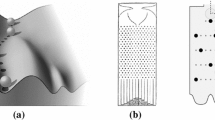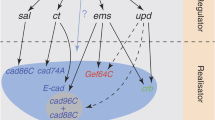Abstract
Recent work in biology and cognitive science depicts a variety of target phenomena as the products of a tangled web of causal influences. Such influences may include both internal and external factors as well as complex patterns of reciprocal causal interaction. Such twisted tales are sometimes seen as a threat to explanatory strategies that invoke notions such as ‘inner programs’, ‘genes for’ and sometimes even ‘internal representations’. But the threat, I shall argue, is more apparent than real. Complex causal influence, in and of itself, provides no good reason to reject these familiar explanatory notions. To believe otherwise, I suggest, is generally to commit (at least) one of two seductive errors. The first error is to think that the general notion of a state x coding for an outcome y involves the state's constituting a full description of y. This is what I call the ‘myth of the self-contained code’. The second error is to think that the practice of treating certain factors as special (e.g., seeing genes as coding for outcomes in a way environmental factors do not) depends on the (often mistaken) belief that the singled out factor is somehow doing the most real work. Where the amounts of causal influence are evenly spread, it is assumed there can be no reason to treat one factor in a special way. This is what I term the ‘Myth of Explanatory Equality’. Avoiding these errors involves reminding ourselves of (1) the rich context-dependence of even standard, unproblematic uses of the notions of code, program and information content (all three make sense only relative to an assumed ecological backdrop) and (2) the difference between explaining why an event occurred and displaying the full workings of a complex causal system.
Similar content being viewed by others
References
Arthur, B. (1990), ‘Positive Feedbacks in the Economy’. Scientific American. 92, pp. 99.
Boden, M. (ed.). (1996), The Philosophy of Artificial Life, Oxford: Oxford University Press.
Burge, T. (1979), ‘Individualism and the Mental’. Midwest Studies in Philosophy, 4, pp. 73–122.
Burian, R. (1981), ‘Sociobiology and Genetic Deteminism’. Philosophical Forum, 13, pp. 43–66.
Clark, A. (1989), Microcognition (MIT Press)
Clark, A. (1997), Being There: Putting Brain, Body and World Together Again. Cambridge, MA: MIT Press.
Clark, A. (in progress), Re-Thinking Innateness: A Critical Study.
Clark, A. (in press). The Dynamical Challenge. Cognitive Science.
Clark, A. (submitted) Time and Mind.
Clark, A. and Chalmers, D. (submitted). The Extended Mind
Clark, A. and Toribio. J. (1995), ‘Doing Without Representing?’ Synthese 101: pp. 401–431.
Cohen, J. and Stewart, I. (1994), The Collapse of Chaos. London: Penguin Press.
Dawkins, R. (1982), The Extended Phenotype. Oxford: Oxford University Press
Dennett. D. (1995), Darwin's Dangerous Idea. New York: Simon and Schuster.
Elman, J., Bates. E., Johnson. M., Karmiloff-Smith, A., Parisi, D. and Plunkett, K. (eds.). (1996), Rethinking Innateness Cambridge: MIT Press
Franklin, S. (1995), Artificial Minds. Cambridge, MA: MIT Press.
Gifford. F. (1990), ‘Genetic Traits’. Biology and Philosophy, 5, pp. 327–347.
Godfrey-Smith, P. (1996), Complexity and the Function of Mind in Nature. Cambridge: Cambridge University Press.
Goodwin, B. (1995), How the Leopard Changed its Spots. London: Phoenix.
Gray, R. (1992), ‘The Death of the Gene’. in P. Griffith (ed.), Trees of life: Essays in the philosophy of Biology. Dordrecht: Kluwer. pp. 165–210
Griffiths. P. (ed.), (1992), Trees of life: Essays in the Philosophy of Biology. Dordrecht: Kluwer.
Horn, G. (1985), Memory, Imprinting and the Brain. Oxford: Clarendon Press
Hutchins, E. (1995), Cognition in the Wild. Cambridge, MA: MIT Press.
Jackson, F (1996) Mental Causation Mind 105:419: pp. 377–413
Johnson, M. (1997), Developmental Cognitive Neuroscience. Oxford: Blackwell.
Johnson, M. and Bolhuis. J. (1991), ‘Imprinting Predispositions and Filial Preference in the Chick’. in R. Andrew (ed.), Neural and Behavioral Plasticity Oxford: Oxford University Press. pp. 133–156
Johnson, M. and Horn, G. (1986), ‘Dissociation of Recognition Memory and Associative Learning by a Restricted Lesion of the Chick Forebrain’. Neuropsychology, 24, pp. 329–340.
Johnson, M. and Horn, G. (1988), ‘The Development of Filial preferences in the Dark-Reared Child’. Animal Behavior, 36, pp. 675–683.
Johnson, M. and Morton. J. (1991), Biology and Development: The Case of Face Recognition. Oxford: Blackwell.
Johnson, T. (1988), Developmental Explanation and the Ontogeny of Birdsong: Nature / Nurture Redux. Behavioral and Brain Sciences, 11, pp. 617–663.
Kauffman, S. (1993), The Origins of Order. Oxford: Oxford University Press.
Keijzer. F In Press) The Generation of Behavior: On the Function of Representation in Organism/Environment Dynamics.
Kelso, S. (1995) Dynamic Patterns. Cambridge: MIT Press
Kirsh, D. and Maglio. P. (1995), On Distinguishing Epistemic from Pragmatic Action. Cognitive Science, 18, pp. 513–549.
Maes, P. (1994), Modeling Adaptive Autonomous Agents. Artificial Life, 1(1/2), pp. 135–162.
McCabe, B. and Horn. G. (1994), ‘Learning-related Changes in Fos-like Immunoreactivity in the Chick Forebrain After Imprinting’. Proceedings of the Natural Academy of Sciences of the USA, 91. pp. 11417–11421.
O'Reilly, R. and Johnson, M. (1994), ‘Object Recognition and Sensitive Periods: a Computational Analysis of Visual Imprinting’. Neural Computation. 6: pp. 357–390.
Oyama, S. (1985), The Ontogeny of Information: Developmental Systems and Evolution. Cambridge: Cambridge University Press.
Port, R. and Gelder, T. V. (eds.). (1995), Mind as Motion: Dynamics, Behavior and Cognition. Cambridge. MA: MIT Press.
Putnam, H. (1975), “The meaning of ‘meaning’, in H. Putnam (ed.). Mind, Language and Reality (pp. 215–275). Cambridge: Cambridge University Press.
Resnick, M. (1994), Turtles, Termites and Traffic Jams: Explorations in Massively Parallel Microworlds. Cambridge. MA: MIT Press.
Steels. L. (1994), ‘The Artificial Life Roots of Artificial Intelligence’. Artificial Life, 1(1/2), pp. 75–110.
Sterelny, K. (1995), ‘Understanding Life: Recent Work in Philosophy of Biology’. British Journal for the Philosophy of Science. 46(2). 155–1-83.
Thelen, E. and Smith, L. (1994), A Dynamic Systems Approach to the Development of Cognition and Action. Cambridge, MA: MIT Press.
Van Fraassen, B. (1980), The Scientific Image. Oxford: Clarendon Press.
van Gelder. T. (1995), What Might Cognition Be, If Not Computation? Journal of Philosophy, XCII(7), pp. 345–381.
van Gelder, T. and Port. R. (1995), It's About Time: An Overview of the Dynamical Approach to Cognition, in R. Port and T. v. Gelder (Eds.), Mind as Motion: Explorations the Dynamics of Cognition. Cambridge. MA: MIT Press. pp. 1–44.
Varela. F., Thompson. E. and Rosch, E. (1991), The Embodied Mind. Cambridge, MA: MIT Press.
Author information
Authors and Affiliations
Rights and permissions
About this article
Cite this article
Clark, A. Twisted Tales: Causal Complexity and Cognitive Scientific Explanation. Minds and Machines 8, 79–99 (1998). https://doi.org/10.1023/A:1008238431527
Issue Date:
DOI: https://doi.org/10.1023/A:1008238431527




